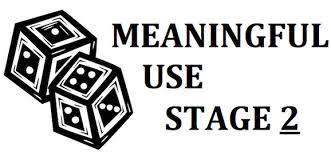 If you’re like many healthcare organizations in the throes of achieving Stage 2 Meaningful Use you’re probably wondering how to decide what products or services will be the best fit for you. One of the major decisions will be choosing a patient portal service which meets the Meaningful Use Core Objectives.
If you’re like many healthcare organizations in the throes of achieving Stage 2 Meaningful Use you’re probably wondering how to decide what products or services will be the best fit for you. One of the major decisions will be choosing a patient portal service which meets the Meaningful Use Core Objectives.
In order to meet the Meaningful Use Core Objective surrounding patient access, healthcare organizations must implement a patient portal: this is a secure, online service that gives patients the ability to access their health information anytime, from anywhere. This might already sound familiar to you; the goal of the electronic health record is to give healthcare providers this ability. While it’s generally easier for healthcare organizations to utilize programs for physicians to exchange information, it can be a challenge to find a service that will be useful to patients. In order to meet the Meaningful Use Core Objective, not only do patients need to sign up for the chosen service, but 5% need to actually access their health information. For organizations and providers, that not only means getting their patients signed up, but selecting information to be accessed by the patient, which could be anything from lab results to discharge summaries.
1. Choosing a service is the first hurdle, and aside from security and reliability, most organizations have one more major consideration on their minds: cost. Finding a reliable and cost-effective patient portal can be a challenge, but what many organizations might not realize is that most likely, their current EMR will offer this service. For some, the best option may be to optimize the technology already in use; BHM Healthcare Solutions can help you do this. Consultants have expertise not only in EMR implementation, but optimization.
2. But once you have a portal in place, how do you engage your patients in using it? What should you do when patients (or providers!) resist technology? It’s vital for the success of your portal program to emphasize the convenience and reliability of the service to your patients; and in choosing a portal, you need to be sure it will live up to the promise. By working with a technology you are already familiar with, such as your current EMR, you can present the option to your patients with confidence and be able to address questions as they come up in the office. This creates confidence and your patients are much more likely to participate in a service if they feel the recommendation is earnest.
3. As an organization, you also need to decide what health information is most useful for a patient to have access to. Utilize the statistics of your medical records department to find out what information is most requested by patients, and plan to incorporate that information into the patient portal, further enticing patients not only to sign up, but use the service consistently.
Patient portals are just one challenge that healthcare organizations are facing in the era of Meaningful Use, but it is possible to achieve cost-effective and reliable measures for your providers and your patients.
About BHM Healthcare Solutions – www.dev.dev.bhmpc.com
BHM is a healthcare management consulting firm whose specialty is optimizing profitability while improving care in a variety of health care settings. BHM has worked both nationally and internationally with managed care organizations, providers, hospitals, and insurers. In addition to this BHM offers a wide breadth of services ranging including healthcare transformation assistance, strategic planning and organizational analysis, accreditation consulting, healthcare financial analysis, physician advisor/peer review, and organizational development.
Contact Us : re*****@*******pc.com, 1-888-831-1171
To request information on how BHM can assist you with your EMR optimization, please click below.

